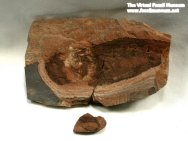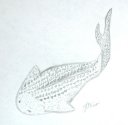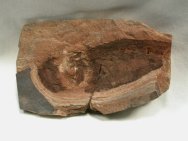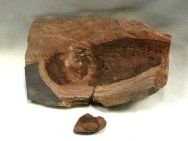 Description:
The Thelodontia are a group of fishes most commonly known from their
distinctive tooth-like scales. Indeed the term Thelodont , derived
from Greek, means nipple tooth. The teeth have a characteristic
crown made of dentine. The scales even on a single specimen Description:
The Thelodontia are a group of fishes most commonly known from their
distinctive tooth-like scales. Indeed the term Thelodont , derived
from Greek, means nipple tooth. The teeth have a characteristic
crown made of dentine. The scales even on a single specimen  are
quite variable, as can be seen here. Thelodonts are rarely found
as complete specimens; those that are show them to be flattened
fish, many of which were bottom dwellers. Recent finds of intact
specimens from Canada show that they radiated into some deep-bodied
forms that swam freely in the water column. These deep-bodied forms
may have been more closely allied with jawed fishes than their other
relatives. All Thelodonts were extinct by the Upper Devonian. are
quite variable, as can be seen here. Thelodonts are rarely found
as complete specimens; those that are show them to be flattened
fish, many of which were bottom dwellers. Recent finds of intact
specimens from Canada show that they radiated into some deep-bodied
forms that swam freely in the water column. These deep-bodied forms
may have been more closely allied with jawed fishes than their other
relatives. All Thelodonts were extinct by the Upper Devonian.
This
is a huge example of the taxon; a more “normal” size
example is shown alongside. The sketch shown what Longanellia looked
like in life.
Thelodont
References |





